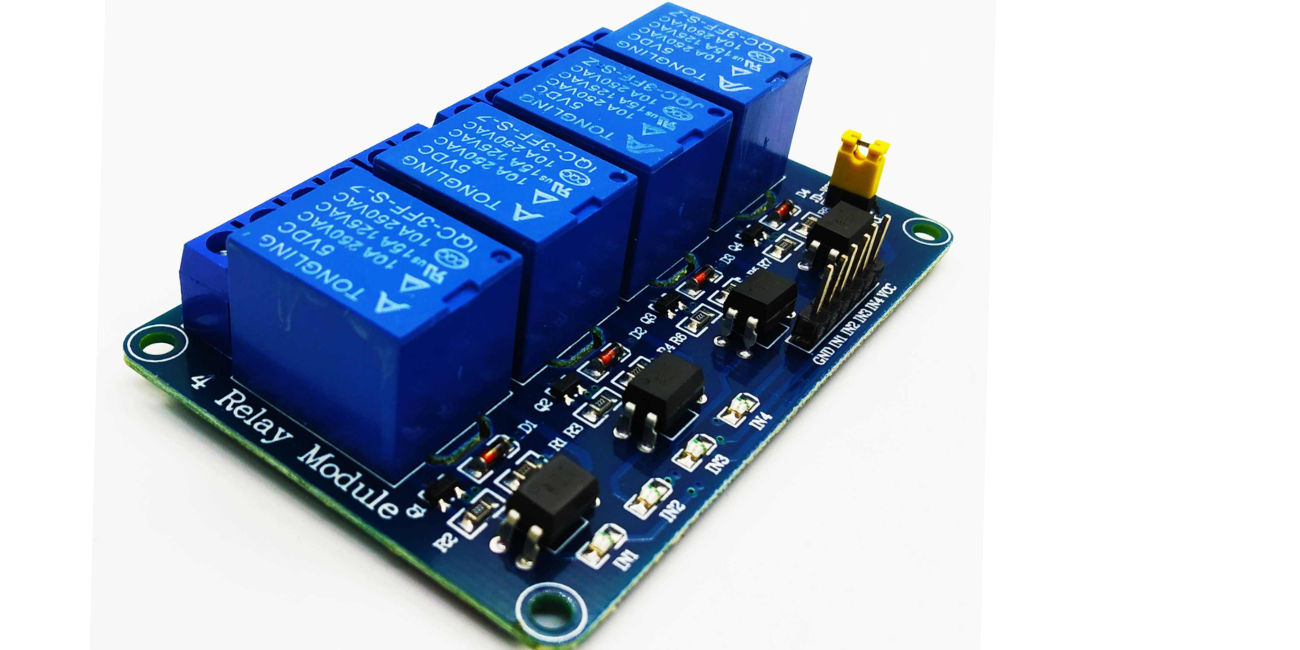In the world of electronics and automation, controlling external devices remotely is crucial. This is where the 4 Channel 5V Relay Board Module comes into play. This versatile module allows you to control up to four separate devices using digital signals, making it a cornerstone for a wide range of projects, from home automation to industrial control systems.
What is a Relay Board Module?
At its core, a relay board module is an electronic circuit that uses relays to switch high-voltage or high-current devices with low-voltage signals. Relays are electromechanical switches that open or close an electrical circuit. By using a low-voltage signal, typically 5V in this case, you can control devices that operate on much higher voltages or currents, such as AC motors, lamps, solenoids, and more.
Key Features of the 4 Channel 5V Relay Board Module:
- 4 Independent Channels: This module provides four isolated channels, each with its own relay, allowing you to control multiple devices simultaneously.
- 5V Control Signal: Each channel is typically controlled by a digital signal of 5V, making it compatible with various microcontrollers like Arduino, Raspberry Pi, and ESP32.
- Isolation: The relays provide electrical isolation between the control signals and the high-voltage circuits, ensuring safety and preventing damage to your microcontroller.
- Compact Size: The module is typically compact and easy to integrate into your projects.
- Easy to Use: Most modules come with clear pinouts and straightforward connections, making them user-friendly for both beginners and experienced hobbyists.
How does it Work?
- Control Signal: When a 5V signal is applied to the input pin of a channel, it activates the relay coil within that channel.
- Relay Activation: The energized coil attracts a movable arm, closing the contacts of the relay.
- Device Control: This closes the circuit for the connected device, allowing current to flow and the device to operate.
- Signal Removal: When the 5V signal is removed, the relay coil de-energizes, the movable arm returns to its original position, and the circuit for the device is opened.
Applications of the 4 Channel 5V Relay Board Module:
- Home Automation:
- Control lights, fans, and appliances remotely.
- Create automated irrigation systems.
- Build security systems with motion-activated alarms.
- Industrial Control:
- Control motors, valves, and other industrial equipment.
- Implement automated production lines.
- Monitor and control environmental conditions.
- Robotics:
- Control robotic grippers and actuators.
- Implement advanced robotic behaviors.
- Hobby Projects:
- Build a DIY alarm clock with a unique wake-up sequence.
- Create a remote-controlled model car or boat.
- Experiment with electronic locks and security systems.
Getting Started with the 4 Channel 5V Relay Board Module:
-
Gather Your Components:
- 4 Channel 5V Relay Board Module
- Microcontroller (e.g., Arduino, Raspberry Pi)
- Jumper wires
- Breadboard (optional)
- Target devices (e.g., LEDs, motors)
- Power supply
-
Connect the Module:
- Connect the VCC and GND pins of the module to the appropriate power supply pins on your microcontroller.
- Connect the signal pins of each channel to the digital output pins of your microcontroller.
- Connect the load (target device) to the appropriate output terminals of the relay.
-
Write Code:
- Use your microcontroller's programming language (e.g., Arduino IDE) to write code that controls the relay board.
- Use digitalWrite() function to send high (5V) or low signals to the control pins of the module.
-
Test and Experiment:
- Upload the code to your microcontroller.
- Test each channel individually to ensure proper operation.
- Experiment with different combinations of channels and devices to explore the module's capabilities.
Conclusion:
The 4 Channel 5V Relay Board Module is a powerful and versatile tool for anyone interested in electronics and automation. Its ability to control multiple devices with low-voltage signals opens up a world of possibilities for both hobbyists and professionals. By understanding its features, operation, and applications, you can unleash its potential and create innovative and exciting projects.
Disclaimer: This blog post is for informational purposes only and should not be considered professional advice. Always exercise caution and follow safety guidelines when working with electronics.

